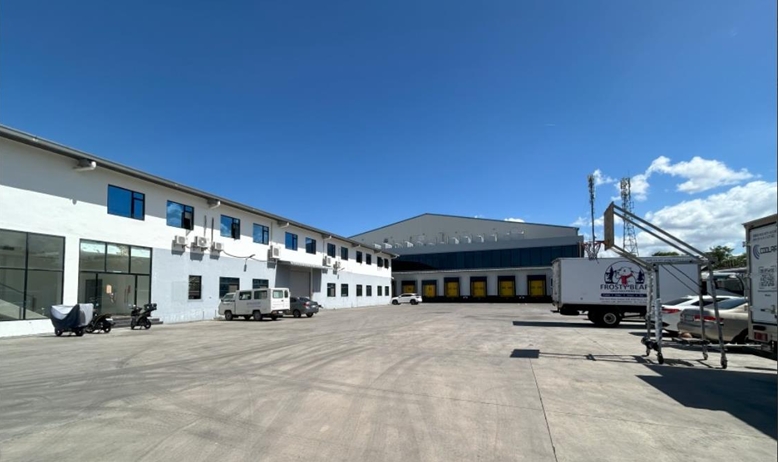The cold chain sector has recently drawn heightened attention from both government and private stakeholders, according to the country’s leading property management and consultancy services firm – Prime Philippines.
In its analysis, Prime Philippines cited the government’s efforts in the logistics sector, particularly the Department of Agriculture (DA).
To extend the shelf life of agricultural produce and stabilize market prices, the DA has allocated PHP3 billion for the development of 99 cold storage facilities, prioritizing underserved areas such as Camarines Sur, Nueva Ecija, Occidental Mindoro, and other remote provinces.
Philippine leasable cold storage market grows 32%, backed by aggressive private expansion
Meanwhile, the private sector has made substantial strides, Prime Philippines noted.
From 2021 to 2024, developers delivered nearly 150,000 new leasable pallet positions, expanding the national capacity to approximately 840,000 pallet positions—a 32 percent increase. This growth trajectory shows no signs of slowing.
Following acquisitions in Pangasinan and Iloilo in Q1 2025, Artico, the cold storage subsidiary of Ayala Corporation, is poised to add another 10,000 pallet positions across planned facilities in Santa Rosa, Laguna and Consolacion, Cebu. In parallel, Mets Logistics, secured a PHP 7-billion investment from Growtheum Capital to further scale its national footprint. These developments are not occurring in isolation—recent trends indicate a clear uptick in underlying demand drivers, suggesting that the sector’s expansion is increasingly supported by solid market fundamentals.
Urban population growth fuels cold storage expansion
Rapid urbanization and steady population growth are driving increased demand for cold storage infrastructure in the Philippines. From 2015 to 2020, the country’s annual population growth rate was 1.63 percent, a slight decline from the 1.72 percent recorded in the previous five-year period. Despite the deceleration in population growth, urbanization has continued to accelerate.
By 2020, more than half of the population—around 54 percent—was living in urban cities. This urban shift is transforming consumption patterns, with more Filipinos relying on supermarkets and food delivery services. These modern retail and distribution channels depend heavily on robust cold chain systems to maintain product quality and ensure food safety across the supply chain.
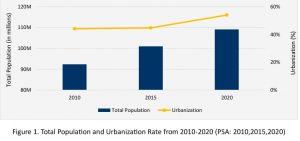
ASF fallout will sustain heavy pork importation
The storage of meat has consistently been the strongest demand driver for cold storage. From January to March 2025, meat imports climbed to 344.4 million kg, up 26 percent from the same period in 2024. Pork imports are also expected to grow significantly as local hog population remains well below levels recorded in 2019 as pig farmers still grapple with the African Swine Flu. Collectively, the rise in imports is also reflected in the pork and poultry inventories of National Meat Inspection Service accredited cold storages, whose monthly ending inventories as of 2025 all reflect Y-o-Y growths.
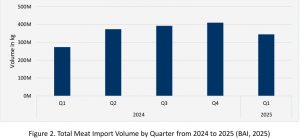

Philippine fisheries output hits six-year high in Q1 2025 amid aquaculture gains
Cold storage infrastructure plays a vital role in minimizing post-harvest fish losses in the Philippines, which the Bureau of Fisheries and Aquatic Resources (BFAR) estimates at 25–40 percent— primarily due to the lack of blast freezers, ice-making equipment, and cold storage warehouses. While overall fishery production has been declining since 2022, the first quarter of 2025 marked a turnaround, recording the highest volume since Q1 2019 by surpassing one million metric tons. Despite contractions in the commercial and municipal fishery subsectors, aquaculture—which accounted for over half of total output—grew by 4.9 percent year-over-year. The Philippine Chamber of 0M 100M 200M 300M 400M 500M Q1 Q2 Q3 Q4 Q1 2024 2025 Volume in kg-6%-7%-2%-5% 26% 38% 8% 19% Jan Feb Mar Apr 2024 Growth 2025 Growth Agriculture and Food Inc. (PCAFI) also forecasts continued recovery in the fisheries sector, supported by enhanced post-harvest facilities and stronger aquaculture performance.
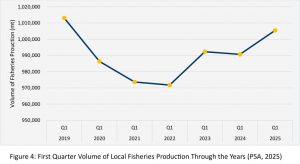
Rebound in produce imports reinforces cold storage demand
While the DA continues to prioritize support for local farmers, private sector cold storage facilities in the Philippines largely cater to the importation of perishable produce, Prime Philippines said.
In 2024, imports of processed vegetables rose sharply by 34 percent year-on-year, totaling USD118.58 million. Meanwhile, the import volumes of cold chain-dependent commodities such as apples, potatoes, pears, and oranges have also rebounded following a dip in 2022. These developments highlight the increasing dependence on cold storage infrastructure to manage the growing volume of imported fruits and vegetables and ensure their quality and shelf life in the domestic market.
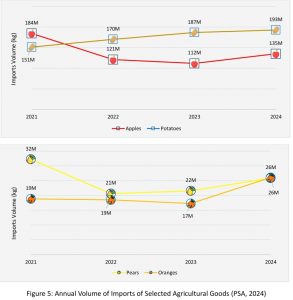
Rising imports and local harvests fuel cold storage expansion nationwide
“The Philippine cold storage sector is no longer a niche logistical function—it is rapidly becoming a cornerstone of national food security and supply chain efficiency. Government intervention, through the Department of Agriculture’s PHP 3-billion cold storage initiative, is reinforcing infrastructure in underserved provinces, while private sector leaders are scaling aggressively. This dual-front expansion is not speculative. It is underpinned by structural demand: persistent meat importation due to ASF’s lingering effects, a rebound in fruit and vegetable imports, surging urbanization, and the resurgence of fisheries output. As capacity scales and geographic coverage improves, the sector is poised to play an increasingly strategic role in stabilizing food supply, minimizing post-harvest losses, and supporting resilient growth in the agri-food economy,” Prime Philippines concluded.


